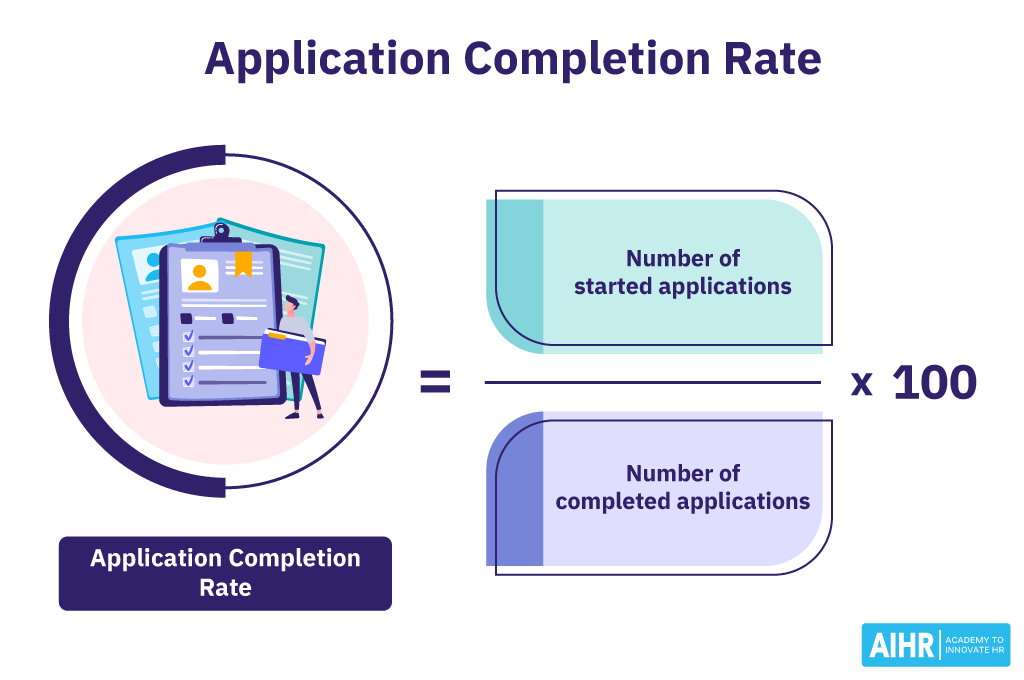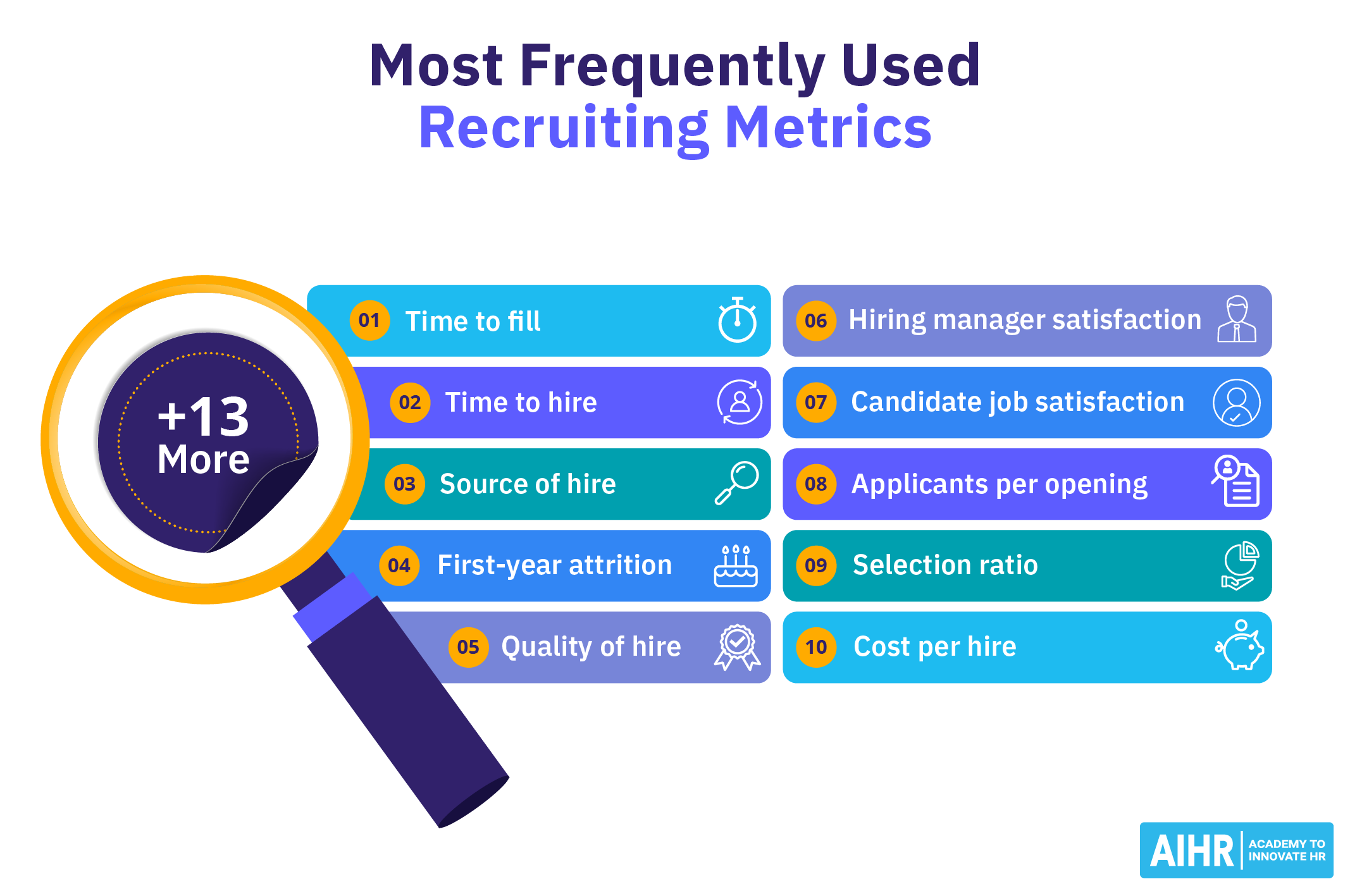Application Completion Rate
What is application completion rate?
Application completion rate is a recruitment metric that measures the percentage of job applications completed and submitted by candidates out of the total number of applications started. This rate is a key indicator of how accessible and user-friendly an organization’s job application process is.
It is also possible to measure the other way around as “Applicant drop-off rate”; the percentage of candidates who did not finish the application.
What is the average application completion rate?
According to Recruiter.com, the average application completion rate is 10.6%. This percentage indicates that only about 1 in 10 individuals who start an application for a job actually complete it.
The length and complexity of the process can significantly impact the completion rate. For instance, applications that ask fewer than 25 questions see an average completion rate of 10.6%, but this rate drops by half to approximately 5.7% for applications that ask more than 50 questions.
Moreover, the time required to complete an application is a significant factor; completion rates can drop dramatically if the process is perceived as too time-consuming.
HR tip
Implement a progress indicator, like a progress bar, during the application process to boost completion rates. This simple visual aid helps manage expectations and motivates applicants to complete the application by providing a clear sense of progress and accomplishment.
Factors influencing the application completion rate
Several factors can influence this metric, including:
- Complexity of the application: The more complex and time-consuming an application is, the less likely applicants are to complete it.
- User interface design: An intuitive and attractive interface can enhance the user experience, encouraging applicants to complete the application. This includes logical flow, visual cues, and progress indicators.
- Application length: Longer applications tend to have lower completion rates. Asking only for essential information can help maintain the applicant’s motivation.
- Loading times and technical issues: Glitches, errors, or slow loading times can deter applicants from finishing their applications.
- Mobile optimization: Job applications that are not optimized for mobile can see lower completion rates.
- Personalization: Tailoring the application experience to the individual, such as by remembering previously entered information or customizing steps based on user responses, can increase engagement and completion rates.
How to calculate application completion rate
To calculate this metric, you use the formula:
Application completion rate = (Number of completed applications / Number of started applications) x 100

Application completion rate calculation example
Let’s say a company has launched an online job application form. During a specific period, the HR department records the following:
- Number of started applications: 200
- Number of completed applications: 90
Calculate ACR:
ACR = (90/200) x 100 = 45%
This means that, out of all the started applications, 45% were completed and submitted.
How to track application completion rate in 5 steps
Tracking the ACR is essential to understand how effective your organization’s application process is and to identify areas for improvement. Here’s how to do it effectively:
- Use an Applicant Tracking System (ATS): An ATS can monitor the progress of each application from start to finish. This system should provide detailed analytics on where candidates start, drop off, and complete the application process.
- Monitor drop-off points: Analyze the data to identify at what stages applicants are dropping off. This helps pinpoint the areas of the process that are too long, confusing, or daunting.
- Gather applicant feedback: Use surveys or feedback tools to gather candidates’s opinions about the process. This direct feedback can provide insights into why some of them might not complete their applications.
- Simplify the application process: Based on data and the feedback collected, make targeted improvements to streamline the application process. This could involve reducing the number of steps, making instructions clearer, or removing unnecessary questions.
- Regular reporting and analysis: Establish a routine for reporting on ACR. This should involve regular analysis to identify trends over time, the effectiveness of changes made, and areas for further improvement.
How HR can improve the application completion rate
HR departments can take several actionable steps to improve this metric:
- “Mystery-shop” your application process: Regularly review and test your own application process to identify and rectify issues that could be discouraging applicants.
- Simplify the application process: Reduce the number of fields and questions to the essentials to avoid overwhelming candidates. Consider what information is truly necessary at the initial application stage.
- Adapt for mobile devices: With a significant number of job seekers using mobile devices to apply for jobs, ensuring the application process is mobile-friendly is crucial. This includes responsive design and easy navigation on smaller screens.
- Write clear and engaging job descriptions: Craft job descriptions that are clear, engaging, and inclusive. Highlight the role’s impact, growth opportunities, and the company culture to attract a broad range of candidates.
- Implement an Application Tracking System (ATS): An ATS can simplify the recruitment process and make it easier for candidates to apply. Choose a user-friendly ATS that integrates well with job boards and your careers page.
- Optimize for accessibility: Ensure your application process is accessible to all candidates, including those with disabilities, to improve completion rates and foster inclusivity.







